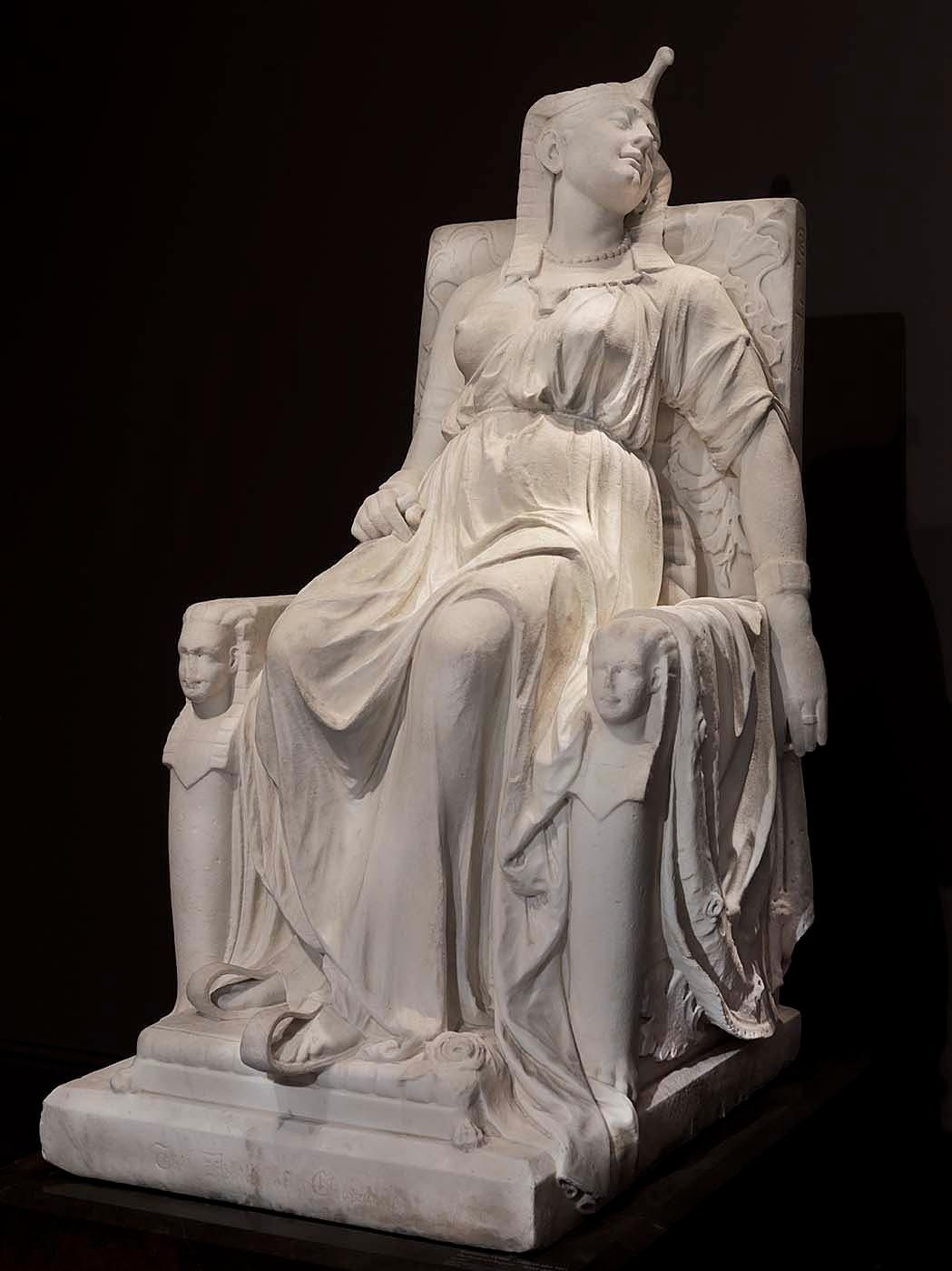Google Doodle Sculpts a Tribute to Pioneering Artist Edmonia Lewis
Celebrate the first day of Black History Month by getting to know the 19th-century sculptor
:focal(396x292:397x293)/https://tf-cmsv2-smithsonianmag-media.s3.amazonaws.com/filer/70/5b/705bf949-88b7-491b-a8b8-b5290819f156/http-npgportraitssiedu-emuseumnpg-media-csc-9400190c_1jpg.jpg)
To mark the first day of Black History Month, Google’s latest doodle, by artist Sophie Diao, depicts the 19th-century sculptor Edmonia Lewis with a chisel in hand, chipping away at her masterpiece: The Death of Cleopatra.
“I chose this piece to highlight in particular not only because it’s such a striking sculpture, but it depicts a female commander and Egyptian queen,” Diao tells Zahara Hill for The Huffington Post. “I found her choice of subject matter extremely powerful.”
Lewis was born in the early 1840s in New Jersey, Ohio or upstate New York. Her father was African-American, and her mother was of Chippewa descent. Lewis was orphaned at an early age and was raised by her mother’s family. They called her by her Chippewa name, “Wildfire.” While later in life, she decided to go by the name Mary Edmonia Lewis, “Wildfire” serves as an apt moniker for the artist—throughout her career, she blazed through discrimination and violence as she doggedly pursued her craft.
When Lewis was just 15 years old, she enrolled in Oberlin College, a private liberal arts school in Ohio. Slavery would still be legal in the United States for another six years when Lewis started Oberlin, and Al Jazeera reports that at the time, the college was one of few institutions that would enroll African American students.
But Lewis’ education came to an abrupt and violent end in 1863 when she was accused of poisoning two of her white roommates. Lewis was forced to stand trial, and though she was ultimately acquitted, she was attacked by a mob of white vigilantes, and ultimately left Oberlin before graduating, “in part, due to harassment,” the Edmonia Lewis Center for Women and Transgender People at Oberlin writes, as Talia Lavin notes in The Toast.
Undefeated by this devastating incident, Lewis moved to Boston and went on to secure an apprenticeship with Edward A. Brackett, a well-connected Boston sculptor. There, Hill writes, Lewis crafted sculptures of well-known abolitionists. These works proved quite popular, and Lewis was able to use the profits from her sales to travel to Europe. She visited London, Paris, and Florence, before ultimately settling in Rome.
In Italy, Lewis fell in with a group of American women sculptors, who were drawn to the country’s abundance of fine, white marble. Lewis’ sculptures stood out from that of her contemporaries, in part because her work often nodded to Native American and African American culture. The Old Arrow Maker, for example, shows a Dakota woman plaiting a mat, while her father carves an arrowhead from jasper. The sculpture references a scene from "The Song of Hiawatha," a poem by Henry Wadsworth Longfellow.
Lewis’ life across the Atlantic has obscured many details from her autobiography, but Lavin notes that she was buried in London in 1907. Though the majority of her work did not survive to the present-day, much of what remains can be found at the Smithsonian American Art Museum.
One of Lewis’ most famous sculptures (and today's Google Doodle inspiration), The Death of Cleopatra, is among the sculptures on display there. Rediscovered in the 1970s after it went missing for almost a century, the work depicts the Egyptian queen draped over her throne, moments after her death. When the sculpture was first featured at the 1876 Centennial Exhibition in Philadelphia, some critics were shocked by its realism. Others, Google’s Arts & Culture Institute reports, regarded it as the most impressive American sculpture at the exhibition.
